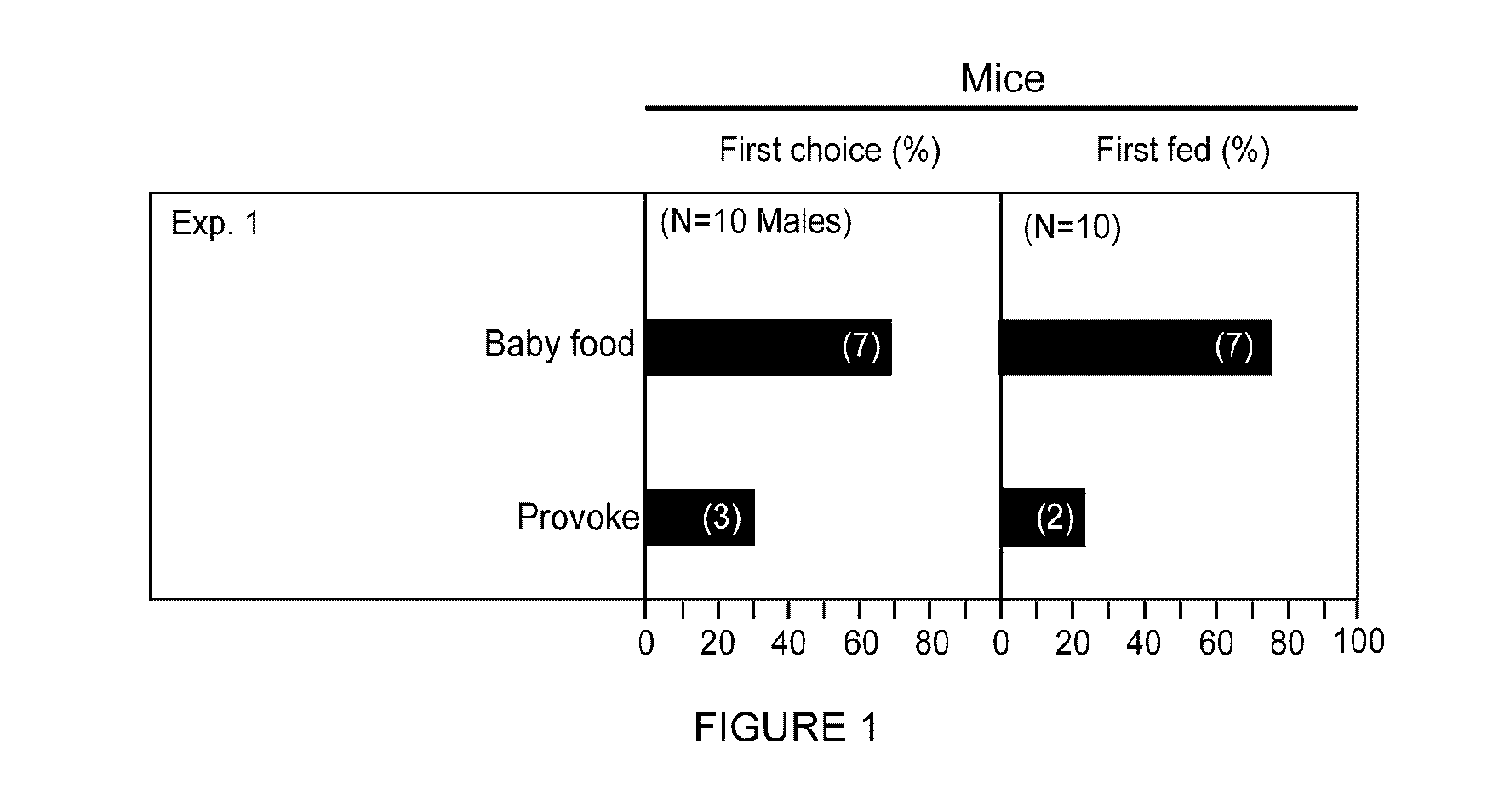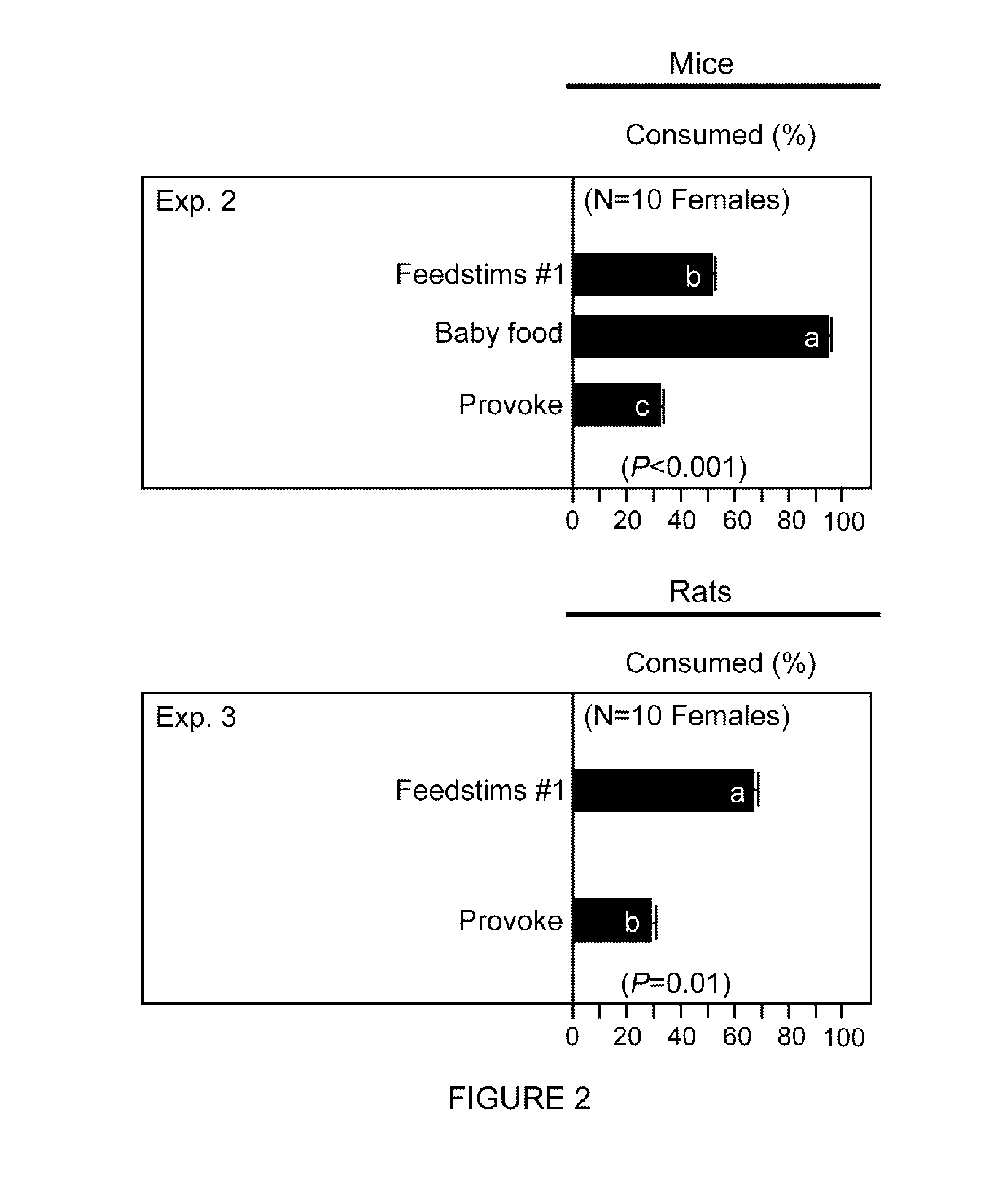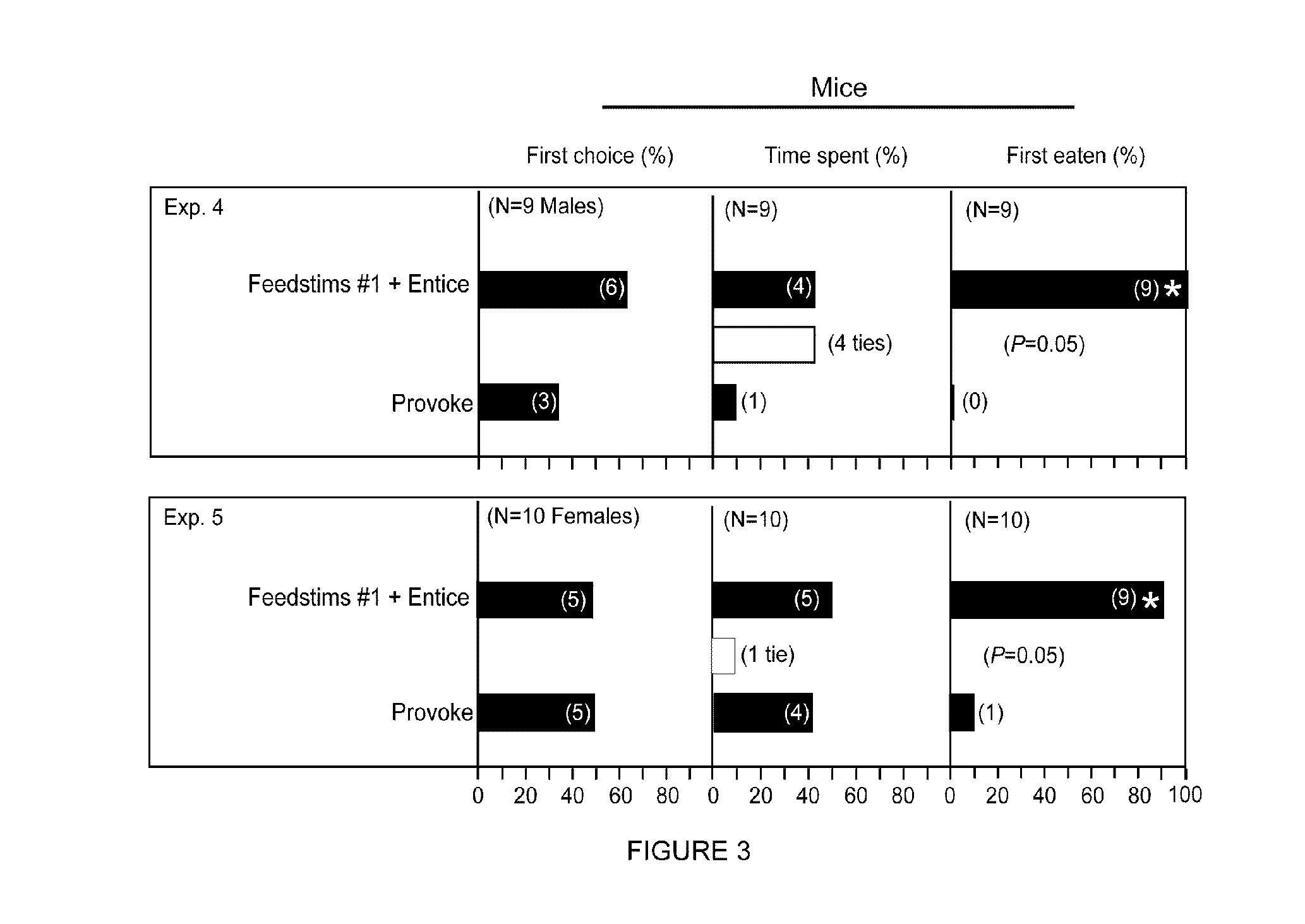New compositions and methods for attracting and stimulating feeding by mice and rats
- Summary
- Abstract
- Description
- Claims
- Application Information
AI Technical Summary
Benefits of technology
Problems solved by technology
Method used
Image
Examples
example # 1
Example #1
Screening for Feeding Stimulants
[0030]Captures of mice and rats in snap traps rely on stimulation of feeding by the target rodent. If the feeding response retains the animal long enough in the right position the snapping mechanism will be triggered and the rodent will be captured and killed. Thus, effective feeding stimulants are an essential component of a rodent bait. Many substances have been used as trap baits, but scientific research done to select the most preferred baits is lacking. To test the feeding response of mice and rats to potential alternatives to lard and cracklings, many experiments were run, with two, three or four food choices each, and 5-10 animals per experiment. The present inventors tested the following 30 foodstuffs: 1) oat: Rogers Porridge Oats, 1.35 kg, Rogers Food Ltd., Armstrong, BC, Canada; 2) wheat: collected from fields in southern Saskatchewan, Canada; 3) barley: Golden Chef Pot Barley (Orge Mondee), Golden Boy Foods Ltd., Burnaby, BC, Cana...
example # 2
Example #2
Comparative Effect of Baby Food and Provoke® Mouse Attractant to Attract and Induce Feeding by Mice
[0033]Experiment 1 compared the ability of baby food and Provoke® Mouse Attractant (the leading commercial bait) to attract male mice and to induce their feeding. In this experiment, the inventors used the two-choice T-tube bioassay apparatus described by Takács et al. (2013). The apparatus consisted of three glass aquaria (30×30×60 cm) interconnected by a T-tube (75×50 cm, 10 cm diameter). For each replicate, a single mouse was deprived of food (but not water) for 4-6 h, and then placed into Aquarium 1. It was then allowed to enter the stem of the T-tube, walk down it, and when it reached the T-junction make a choice whether to turn left or right and walk down the tube toward the stimulus randomly assigned to and held in Aquarium 2 or Aquarium 3. For each mouse, the inventors scored the aquarium (2 or 3) it entered first, the time it spent in each aquarium and the foodstuff ...
example # 3
Example #3
Selection of Ingredients of a Cereal-Based Baby Food as Feeding Stimulants
[0036]The present inventors prepared a novel composition based on some of the ingredients of commercial baby food, and gave the composition the name Feedstims #1 for testing. It had the following proportions of constituents by weight: gelatin (1.13%), calcium propionate (0.30%), water (71.2%), oat flour (14.2%), rice flour (8.0%), wheat bran (4.3%), fructose (1.4%), soy lecithin (0.3%) and safflower oil (0.14%). Gelatin and calcium propionate were added to boiling water until dissolved (wet ingredients). Oat flour, rice flour, wheat bran, fructose and soy lecithin (dry ingredients) were combined and blended together with the boiling hot wet ingredients, effectively cooking the dry ingredients. Safflower oil was added and the water / gelatin / calcium propionate solution was poured in. The constituents were mixed together and allowed to cool.
[0037]In Experiment 2, the response of mice to Feedstims #1 was ...
PUM
 Login to View More
Login to View More Abstract
Description
Claims
Application Information
 Login to View More
Login to View More - R&D
- Intellectual Property
- Life Sciences
- Materials
- Tech Scout
- Unparalleled Data Quality
- Higher Quality Content
- 60% Fewer Hallucinations
Browse by: Latest US Patents, China's latest patents, Technical Efficacy Thesaurus, Application Domain, Technology Topic, Popular Technical Reports.
© 2025 PatSnap. All rights reserved.Legal|Privacy policy|Modern Slavery Act Transparency Statement|Sitemap|About US| Contact US: help@patsnap.com



